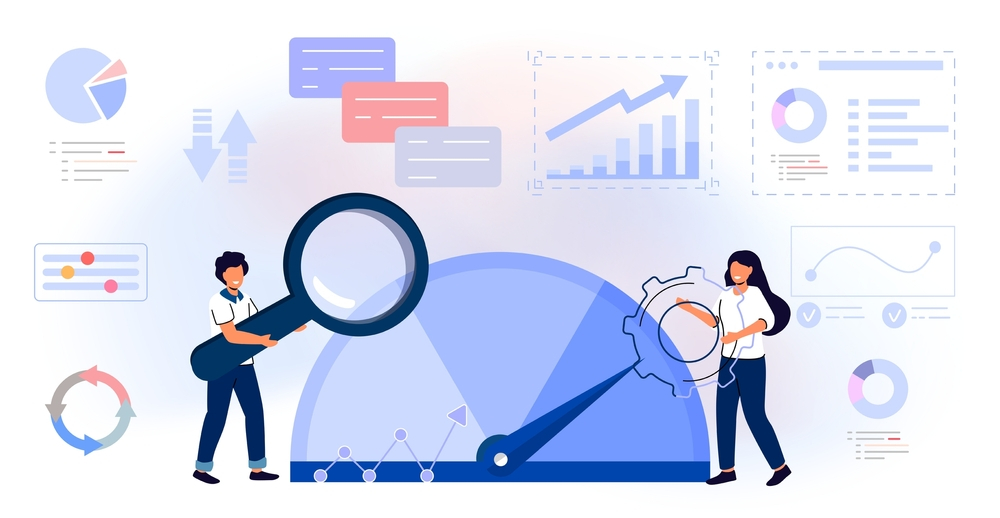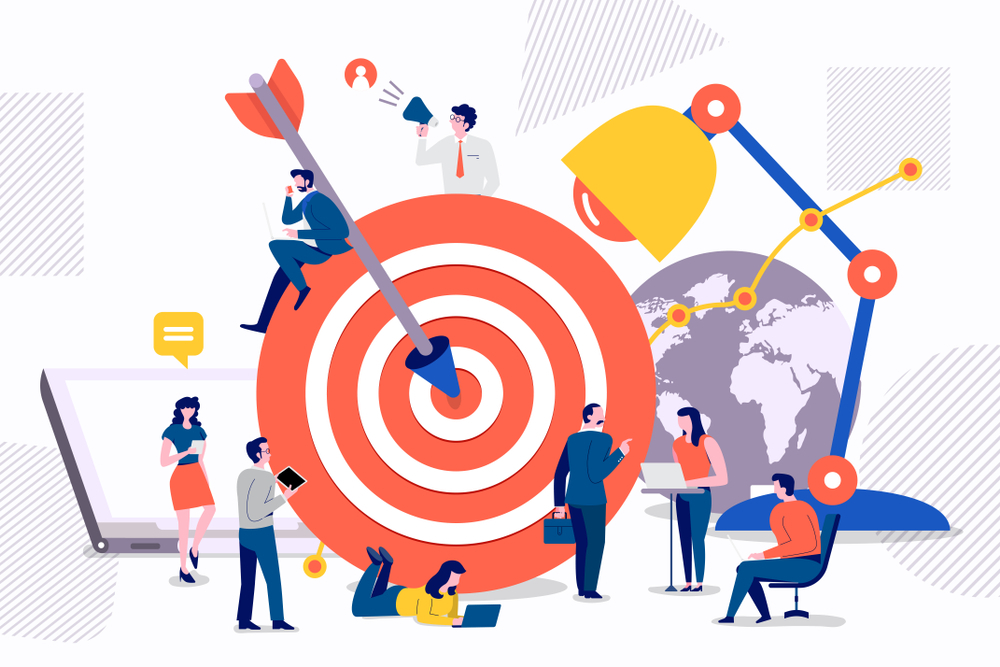One key aspect of marketing that has been the focus of much debate in recent years is awareness. But what exactly is awareness in marketing, and why is it so crucial for marketers and businesses? At its most basic level, awareness refers to the degree to which a brand or product is known and recognized by potential customers. In other words, it’s how familiar people are with what you have to offer. This can be measured in a number of ways, including brand recall, aided and unaided awareness, and top-of-mind awareness.
While awareness has always been an important part of marketing, its role has evolved in the digital age. With the rise of social media, mobile devices, and other digital channels, marketers now have more opportunities than ever before to reach potential customers and build awareness for their brands. At the same time, the concept of performance marketing has also gained traction. Performance marketing is a type of marketing that focuses on measurable results, such as clicks, leads, or sales. Unlike traditional marketing, which may focus on building brand awareness without necessarily tying it to a specific action, performance marketing seeks to directly impact the bottom line.
Despite the emphasis on measurable results in performance marketing, many marketers argue that awareness is still a crucial part of the equation. After all, if people aren’t aware of your brand or product, they’re unlikely to take any action at all. In other words, awareness can be seen as a prerequisite for performance marketing. So, how do awareness and performance marketing relate to each other? Some marketers argue that the two concepts are in conflict, with awareness taking a backseat to measurable results. Others believe that the two are complementary, with awareness serving as the foundation upon which performance marketing is built. Here, we will delve deeper into the debate surrounding awareness in performance marketing. We will explore the history of awareness in marketing, discuss the current state of the debate, and look at strategies for building awareness in the context of performance marketing. Ultimately, we will argue that while awareness may not be the only metric that matters, it is still a crucial part of any successful marketing strategy.
The Noise

Awareness has been a key concept in marketing since the early days of advertising. In the early 20th century, mass media like newspapers, radio, and television allowed marketers to reach large audiences and build awareness for their products and brands. Marketers used slogans, jingles, and other catchy messages to create memorable associations in consumers’ minds. Over time, marketers began to realize that awareness alone wasn’t enough to drive sales. They needed to create a connection between the brand and the consumer and persuade consumers to take action. This led to the rise of persuasive advertising, which focused on emotional appeals and product benefits.
In the digital age, awareness has taken on new importance as the number of channels and platforms for reaching consumers has exploded. Social media, search engines, and mobile devices have created new opportunities for marketers to reach potential customers and build awareness for their brands. At the same time, the rise of performance marketing has put pressure on marketers to focus on measurable results like clicks, leads, and sales. Some marketers have argued that building awareness is no longer important, as long as you can generate direct responses. However, others maintain that awareness is still a crucial part of the marketing mix. In particular, building brand equity and emotional connections with consumers can create long-term value that goes beyond short-term sales. Moreover, a strong brand can act as a buffer against competition and price pressure.
The debate about the role of awareness in marketing is ongoing, with arguments on both sides. On one hand, there are those who believe that building awareness is a waste of resources and that marketers should focus on direct response metrics. On the other hand, there are those who argue that awareness is a necessary foundation for driving long-term success and that it should be measured and optimized like any other metric. Changes in the digital landscape have had a significant impact on the debate. On the one hand, digital channels offer new opportunities for building awareness and engaging with customers. On the other hand, the vast amounts of data generated by digital channels have made it easier to measure and optimize direct response metrics. As a result, the debate about awareness in marketing is likely to continue, with marketers and business owners needing to find the right balance between building awareness and driving measurable results.
Ultimately, the key to success in marketing will be to create a strategy that leverages both awareness and performance marketing to drive long-term growth and profitability.
Awareness in Performance Marketing
Despite the emphasis on measurable results in performance marketing, awareness is still an important part of the equation. In fact, building awareness can have a significant impact on performance metrics in a number of ways. To start with, awareness can drive direct response metrics like clicks and leads. When potential customers are aware of your brand or product, they are more likely to engage with your advertising and take the desired action. This is because awareness creates a sense of familiarity and trust, making it more likely that people will click on your ads or fill out a form. Awareness can also improve the quality of traffic and leads. When people are aware of your brand or product, they are more likely to be interested in what you have to offer. This means that they are more likely to be high-quality leads who are more likely to convert into customers. When properly used, awareness can reduce the cost of acquisition. When people are aware of your brand or product, you are less reliant on paid advertising to drive traffic and leads. This means that you can reduce your advertising spend and rely more on organic traffic, referrals, and word-of-mouth.

And for very obvious reasons, awareness can drive long-term brand equity and customer loyalty. When people are aware of your brand or product, they are more likely to feel an emotional connection and identify with your brand. This can create long-term value by increasing customer lifetime value, reducing churn, and creating a buffer against competition and price pressure. For example, consider a new e-commerce store that is trying to drive sales through Facebook ads. The store might run a series of ads that focus on building awareness for its brand, highlighting its unique value proposition and customer benefits. As people become more aware of the brand, they are more likely to click on the ads, visit the website, and make a purchase. Over time, the store can continue to build awareness through content marketing, social media, and other channels, driving long-term growth and profitability.
Another example is a B2B software company that is trying to generate leads through Google Ads. The company might run a campaign that focuses on building awareness for its brand and product, targeting specific keywords and demographics. As people become more aware of the company, they are more likely to click on the ads, fill out a form, and become high-quality leads. Over time, the company can continue to build awareness through thought leadership content, industry events, and other channels, driving long-term growth and profitability. In both of these examples, building awareness is a crucial part of driving performance metrics like clicks, leads, and sales. By creating a strong brand and emotional connection with customers, businesses can drive long-term growth and profitability through performance marketing.
Awareness in Performance marketing- Strategies and measurement

There are many strategies and tactics that businesses can use to build awareness in the context of performance marketing. Here are some examples and how they can be used:
Content Marketing: Creating valuable content like blog posts, videos, and infographics can help businesses build awareness by providing value to potential customers. By creating content that addresses customer pain points and interests, businesses can attract and engage their target audience, driving traffic and building brand awareness. For example, HubSpot is a leading provider of marketing automation software, and they use a content marketing strategy to build awareness through their blog, eBooks, and other resources. Hubspot leads in inbound marketing, and this is a top view of what their marketing flywheel looks like.
Social Media Marketing: Social media platforms like Facebook, Twitter, and Instagram can be powerful tools for building awareness. By creating and sharing content that resonates with their target audience, businesses can build a following and create a sense of community around their brand. For example, Airbnb has built a massive following on Instagram by sharing photos of its unique and interesting properties around the world. This definitely translates to conversion via a very effective funnel.
Influencer Marketing: Partnering with influencers and thought leaders in a particular industry or niche can be an effective way to build awareness. By leveraging the reach and influence of these individuals, businesses can tap into new audiences and create credibility for their brands. For example, the fashion brand Fashion Nova has built a huge following by partnering with influencers on Instagram to promote their clothing. If influencer marketing is an end, most of the impact will never be seen. With the right funnel, the awareness created through these platforms can be nourished into quick conversions and more profits.
Search Engine Optimization: Optimizing a website for search engines like Google can help businesses improve their visibility and build awareness. By targeting relevant keywords and creating high-quality content that meets the needs of searchers, businesses can drive organic traffic and build awareness over time. For example, the travel website TripAdvisor uses SEO to drive traffic to its site by creating high-quality travel guides and other resources that are optimized for search engines. Awareness searches are by every standard high-quality traffic because it is intent-based. When a commercial keyword is at the source of such traffic, Awareness will be seen as an effective performance marketing strategy
When it comes to measuring awareness in the context of performance marketing, there are a few metrics and tools that businesses can use. Here are some examples:
Brand Awareness: One way to measure awareness is to track brand mentions, social media followers, and website traffic. These metrics can give businesses a sense of how well-known their brand is and how it is growing over time.
Ad Impressions: Measuring the number of ad impressions that a campaign generates can give businesses a sense of how many people are being exposed to their brand. This metric can be especially useful for campaigns focused on building awareness rather than direct response.
Search Engine Rankings: Tracking a website’s search engine rankings for relevant keywords can help businesses measure how visible they are to potential customers. By monitoring changes in rankings over time, businesses can see whether their awareness-building efforts are paying off.
Surveys and Focus Groups: Conducting surveys and focus groups can be a more direct way to measure awareness. By asking participants about their awareness of a brand or product before and after a campaign, businesses can gauge the effectiveness of their awareness-building efforts. Brandlift is a very important metric that can be used in tests too. Brandlift means they can remember your brand because of what they have seen and can relate the brand to its value.
Are you aware?
You need to know that building awareness is still an essential part of performance marketing. However, it is important to balance awareness-building efforts with other metrics and goals, such as conversions, customer acquisition, and revenue. While building awareness can lead to better performance metrics and drive long-term growth, businesses must also focus on driving other measurable results and achieving a positive return on investment. By taking a holistic approach to performance marketing and balancing awareness-building with other goals, businesses can create a sustainable marketing strategy that drives both short-term and long-term success. Ultimately, a well-rounded marketing strategy that balances awareness-building with other metrics and goals will be the key to driving business growth and achieving sustainable success in today’s competitive digital landscape.

